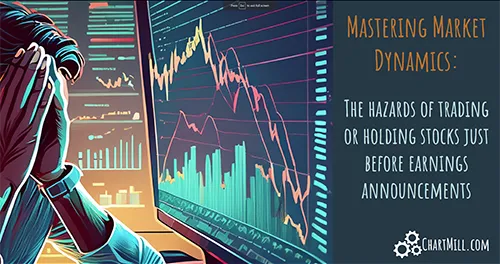The hazards of trading or holding stocks just before earnings announcements
By Kristoff De Turck - reviewed by Aldwin Keppens
Last update: May 13, 2024
In recent weeks, quite a few companies have published quarterly results. Despite more than solid results, investors were not always positive.... sometimes resulting in sharply lower prices.
Three recent examples to illustrate what I am talking about.
META
Both earnings and revenue of Meta Platforms were higher than anticipated last quarter. Yet the share price opened very negative and the closing price was down more than 10% (intraday the loss itself was as high as -15%).
Reason? The rather cautious forecast for revenue in the second quarter (between $36.5 billion and $39 billion). The consensus was counting on $38.3 billion. Despite the upper end of that price range being higher than the consensus, that apparently wasn't high enough....
META also expects capital expenditures to reach $35 billion to $40 billion by 2024, up from $30 billion to $37 billion initially projected. That combination led the stock to fall sharply. Investors expect that A.I. will provide above-average growth, but the fact that this will require firm investments is far less popular.
In any case, the negative price reaction attracted the attention of bargain hunters; since then the stock has risen more than 13%!

DISNEY
Disney's quarterly report is still fresh in our minds (May 07) and here too we note that despite fairly strong numbers (profit was almost 10% higher than expected and revenue was about equal to what analysts had forecast), the stock suffered a blow.
And this despite the rabbit that was pulled out of the hat: The streaming platforms Disney+ and Hulu were able to post modest profits for the first time since November 2019. A rise in subscribers and higher subscription prices made that happen.
So why the sudden price drop (nearly 10% on a closing basis) you might think? As with META, expectations for the next quarter were awaited with suspicion and in this regard the company was rather cautious. No significant subscription growth is expected in the next three months as far as the streaming division is concerned. And a slowdown in growth is also anticipated for the theme parks and cruises section compared to the period shortly after corona.
For now, it remains guessing how investors will react in the coming weeks. Currently, the stock price is faltering around the $105 level.
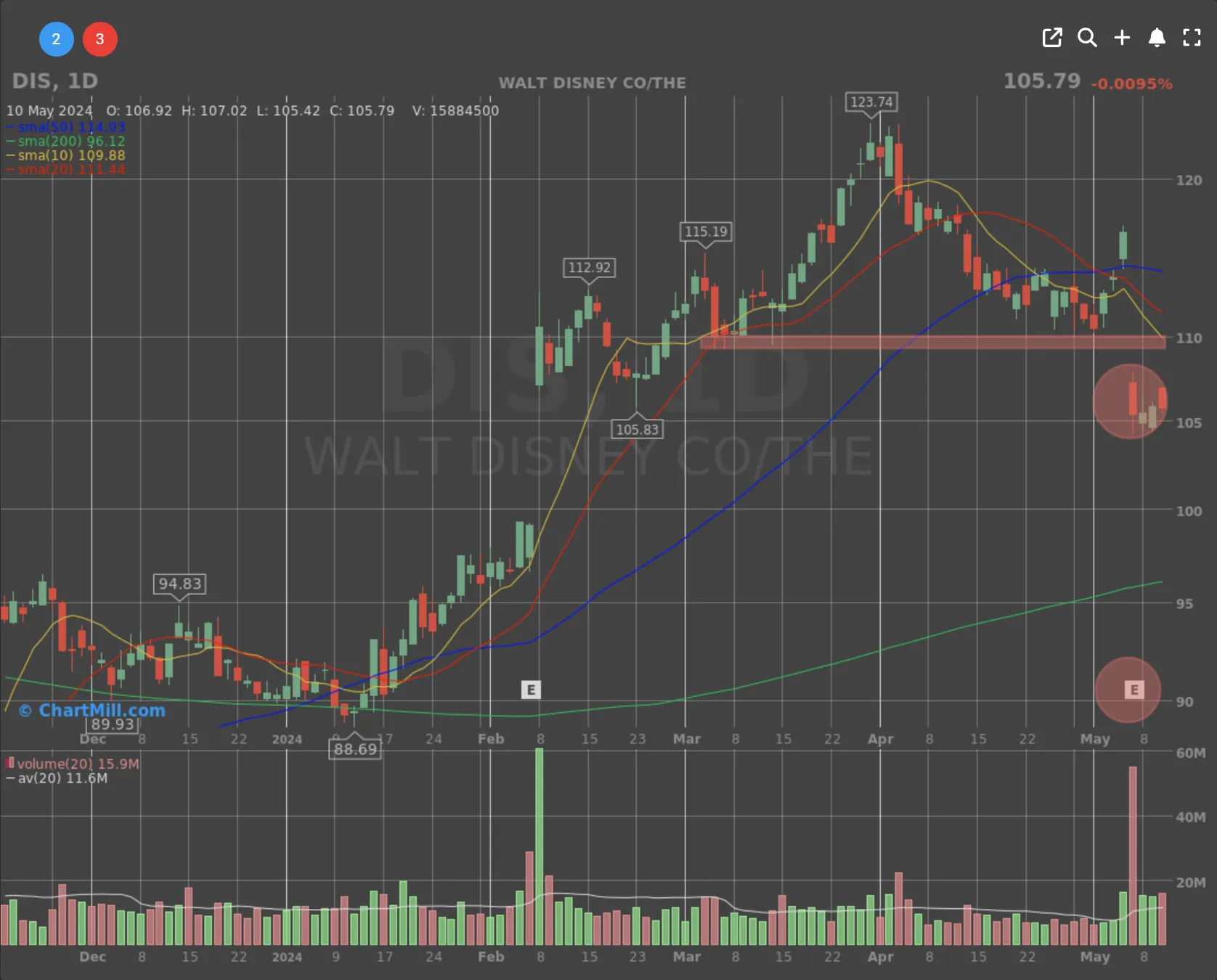
PALANTIR
Finally, let's take a look at Palantir stock.
A few numbers to begin with: In the first quarter of 2024, Palantir saw a 21% year-over-year growth in revenue. On a quarterly basis, that represented a 4% increase. The engine behind this was significant commercial revenues in the U.S., which rose to $150 million (+40%).
Net profit came to $106 million, the largest quarterly profit ever.
And how did the market react? Yep, you guessed it... Shares plunged more than 15% after the announcement of the results and the closing price last Friday, May 10, was even lower ($20.60).
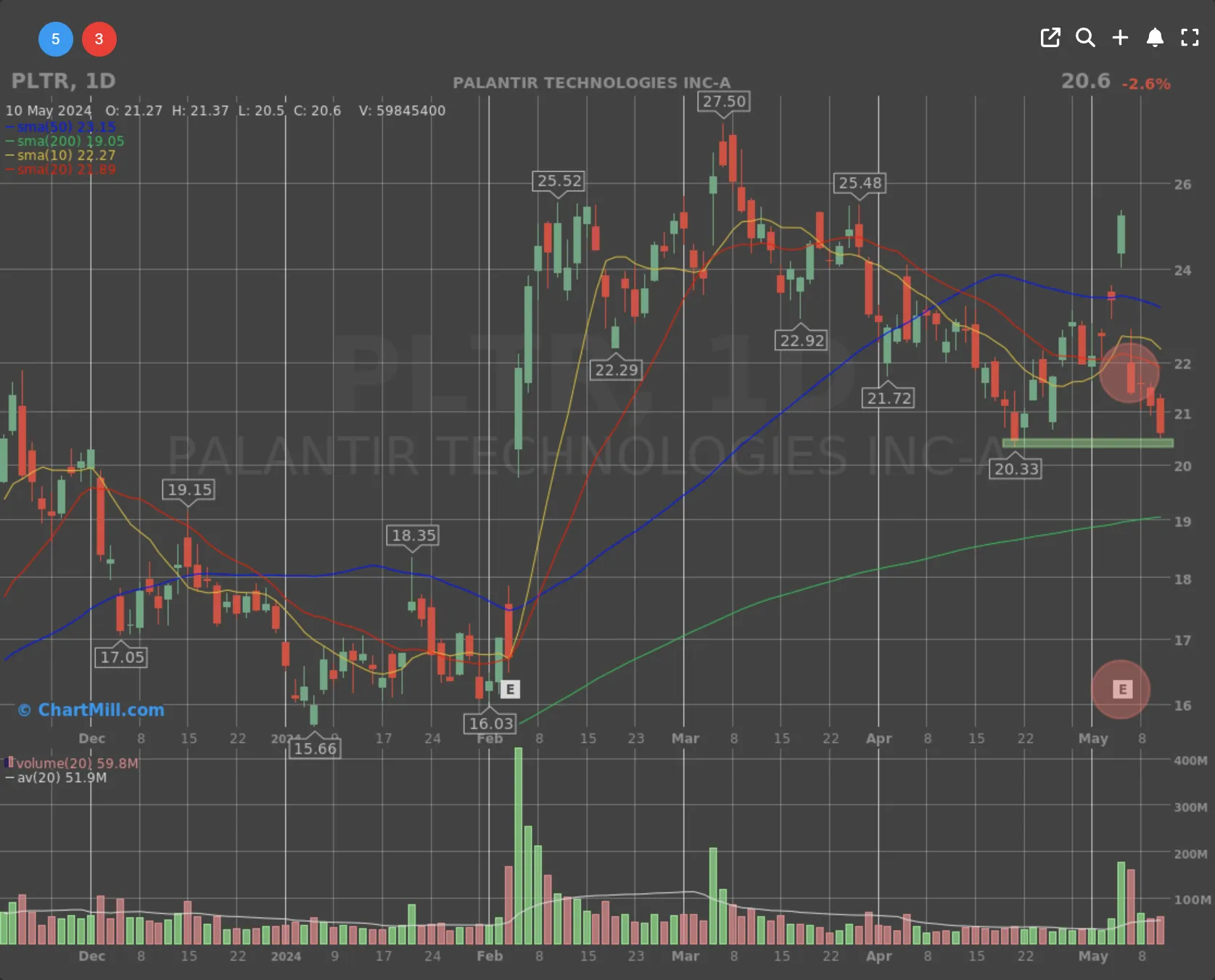
When good isn't good enough...
These are just three striking examples of companies that are being 'punished' despite good results, at least in the short term. One of the main reason for it is visible on the chart; prices had already risen sharply since the last quarter of 2023, and as for Disney and Palantir, it is notable that in the week leading up to the most recent results, the price was already pushed up sharply.
This is due to buyers anticipating good results. But what is often forgotten here is that much of the positive news has already been factored into the rise that preceded the announcement of those results. Even the smallest possible negative perception on the day of the results themselves can then be enough to trigger a negative price reaction.
The common hiccup regarding META, DISNEY and PALANTIR was the very cautious to sometimes slightly negative outlook from management itself for the coming quarter and/or full fiscal year.
FOMO
The 'Fear of Missing Out..."
So... Were you one of the traders who tried to anticipate a sharp rise and ended up being left dazed after the stock price opened more than 10% lower?
If so, be sure to read on and discover some tips and techniques to avoid these costly mistakes once and for all.
Please note that I am assuming you are a swing trader with a short to medium term view and who normally opens positions with a relatively short stop-loss. What I write here does not apply to long-term value investors who are more likely to use these price declines to increase their positions (assuming the fundamental reasons why the company was originally bought still apply, of course).
But first, let me clarify that you are not alone. I too have thought and acted in exactly the same way in the past. An expensive lesson, so you better learn something from it.
Taking action
The most important things first... Do you still have a position in such a stock? And are you facing a significant loss? Then you can do a couple of things.
- Close the position immediately and take your loss
- Or you can set an agressive stoploss just below last day's low. If your stop was not hit by the end of the day and price went up, you can further reduce your loss by raising the stop-loss to the low of the most recent day (until you are finally stopped out).
Taking action... The Wrong Way!
-
Buying additional shares to lower your average purchase price. We strongly advise against this. Dollar cost averaging is a technique that has its time and place but not within a short- to medium-term swing trading strategy! Again, everything has to do with the reason why you took a position and the strategy you use as an investor.
Above all, be honest with yourself. If buying more shares at lower prices was not a basic rule in your original strategy, then you are fooling yourself by suddenly applying that rule now. Is it possible that this will work? Absolutely! And therein lies the biggest danger. If the stock keeps falling and you keep buying more shares, you are finished for good... -
The last option is to do nothing at all and hope this all works out in the end. Respect for your optimistic mindset but let's face it, hope is rarely a good advisor when it comes to investing. A lot of beginning investors start out as short-term investors but end up becoming long-term investors... not so much because they want to, but mainly because they are stuck with a number of loss positions that they did not get rid of in time and where the pain of the loss has become too great to be able to sell.
Next time... Be Prepared!
To avoid these mistakes in the future, there are some things you can do.
Before you decide to buy stocks:
-
If you are about to buy, always check when the company publishes quarterly results. When the date is known, you can find that information on the share's profile page. Attention, some dates are subject to change. So check regularly to know the latest dates. Personally, I will never open positions when the company publishes figures within the time frame of two weeks.
-
Keep your position size and maximum risk percentage per position limited. Loss positions are part of any investment strategy. It always comes down to keeping those losses small. If your position in one stock is limited to, say, 10% of your total portfolio and the price of that stock suddenly opens 50% lower the next trading day, (because of a very bad quarterly report) that will mean a 5% loss for your total port. That loss will most likely be considerably higher than expected because the price opened below your most recent stop-loss. A regrettable setback but not a disaster. It would have been if that position made up 50% of your portfolio, in which case you would suddenly be looking at a 25% loss on your total trading capital!
What about open positions?
Do you already have an open position before publication of the quarterly report? If so, make an assessment of your position first. Is the position currently at profit or loss?
A typical swing trade strategy is characterized by a number of (very) successful positions which ultimately determine to a large extent the total return. These are stocks that move in a clear trend where your stop-loss is not hit for a long period of time and the profits add up to a multiple of your initial risk. Such positions are necessary to compensate for the many small loss-profit and breakeven trades.
Have you built up a substantial profit in a stock that will publish its quarterly earnings in a few days and would you like to secure at least a nice chunk of that profit? Then consider selling part of your position. Especially when the current price is close to an important resistance level. For example, by selling half of your position just before the publication, you secure a nice part of that profit but remain in position should the news be very good and the price continues to rise strongly.
The example below shows the daily and weekly chart of Air Lease Corp. On the left is the time of entry. The position is well into profit. A double top was formed just before publication of the quarterly results. The price level also represents an important resistance on the weekly chart. By selling half the position the day before publication the final profit is significantly higher than if the full position had been sold on the day the stop-loss was triggered by the gap down after the announcement of the quarterly results.
Daily Chart Air Lease (AL)
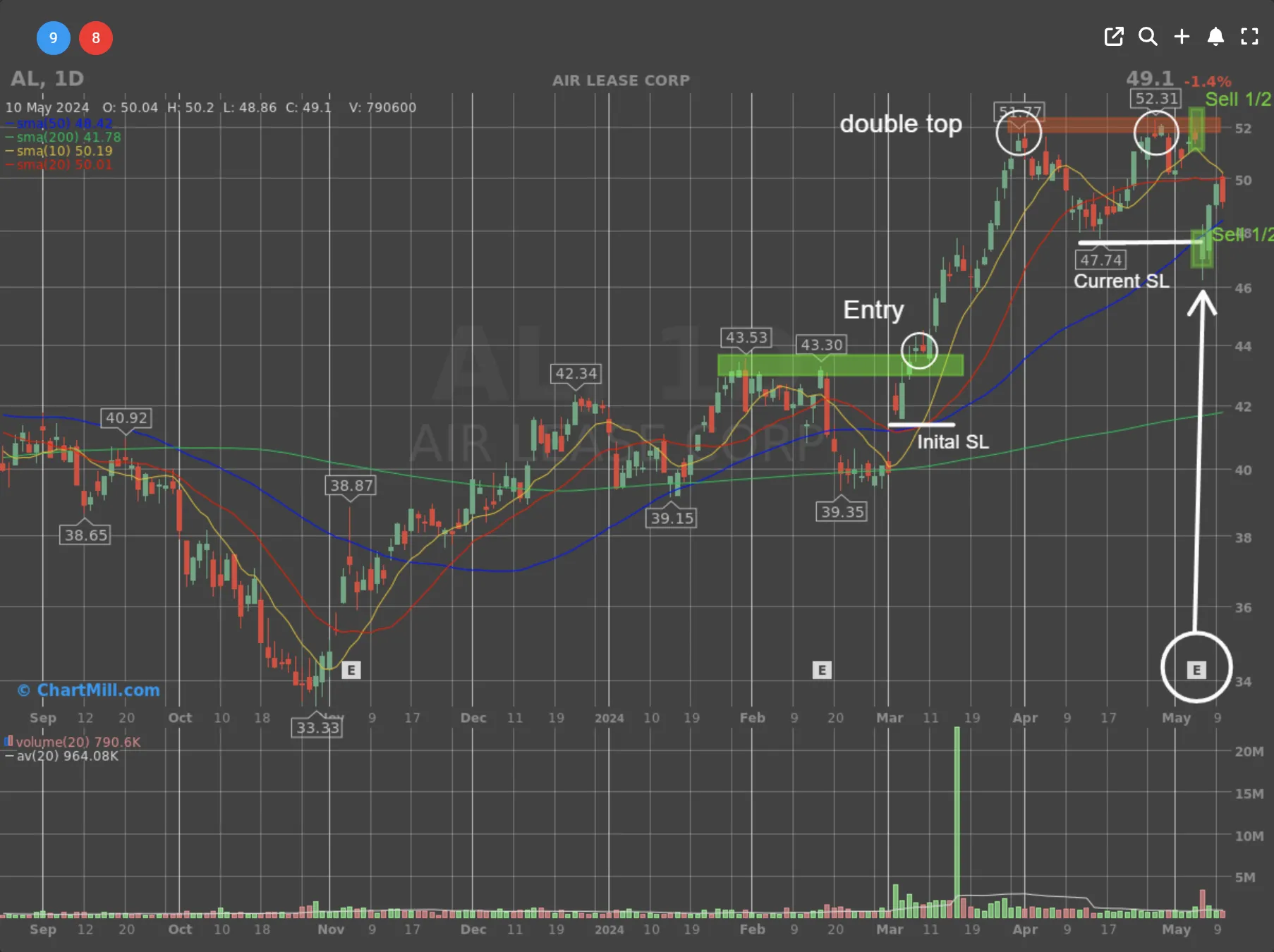
Weekly Chart
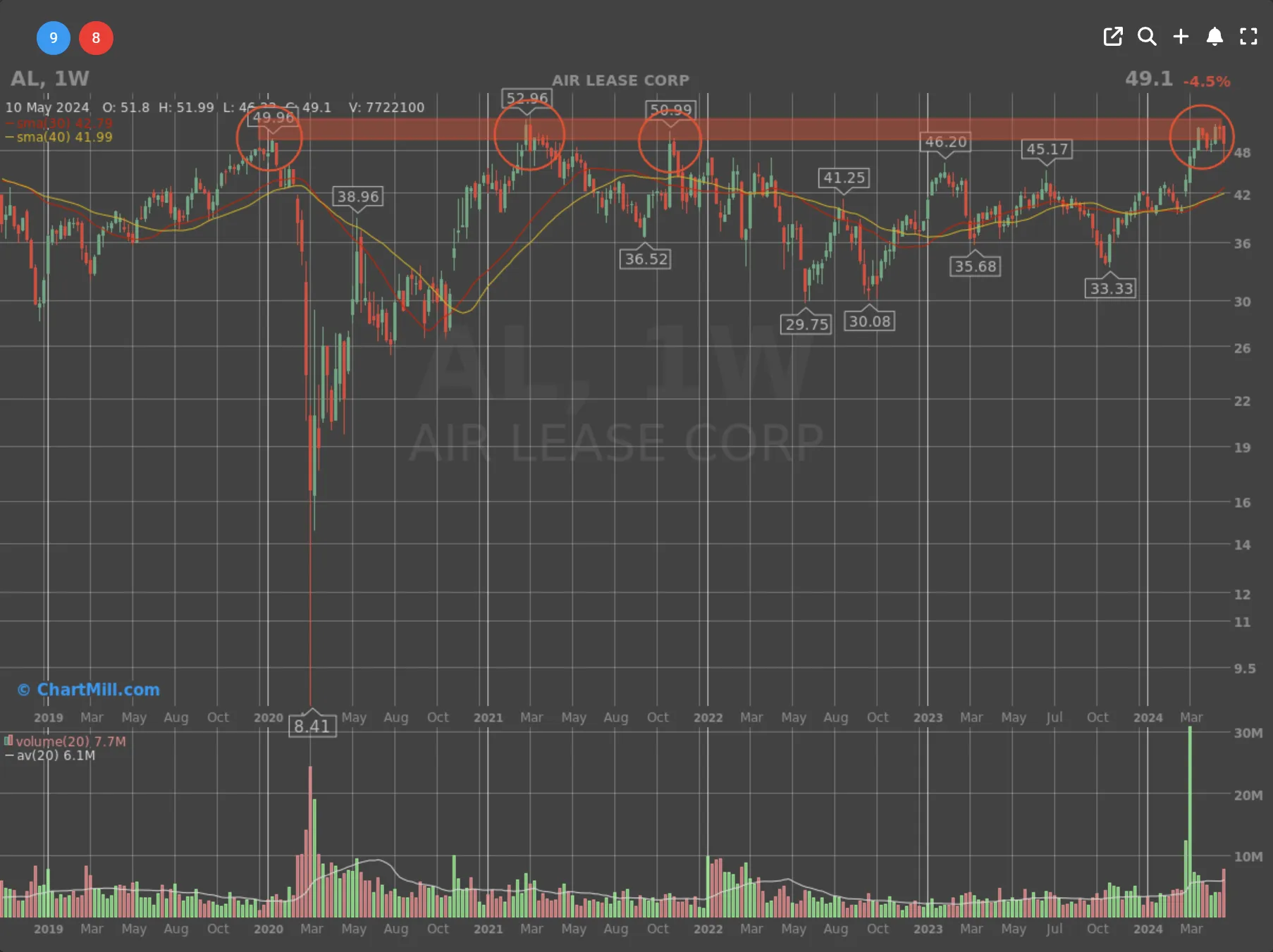
In case of a positive price reaction after quarterly results were published, you will - by only partially scaling out - still own half your shares and be able to benefit from the next uptrend. Granted, those gains would be bigger if you had not sold anything beforehand, but remember that limiting loss positions is rule number one in swing trading.
Below is an example for Freshpet stock where the price opened more than 19% higher after the announcement of quarterly results.
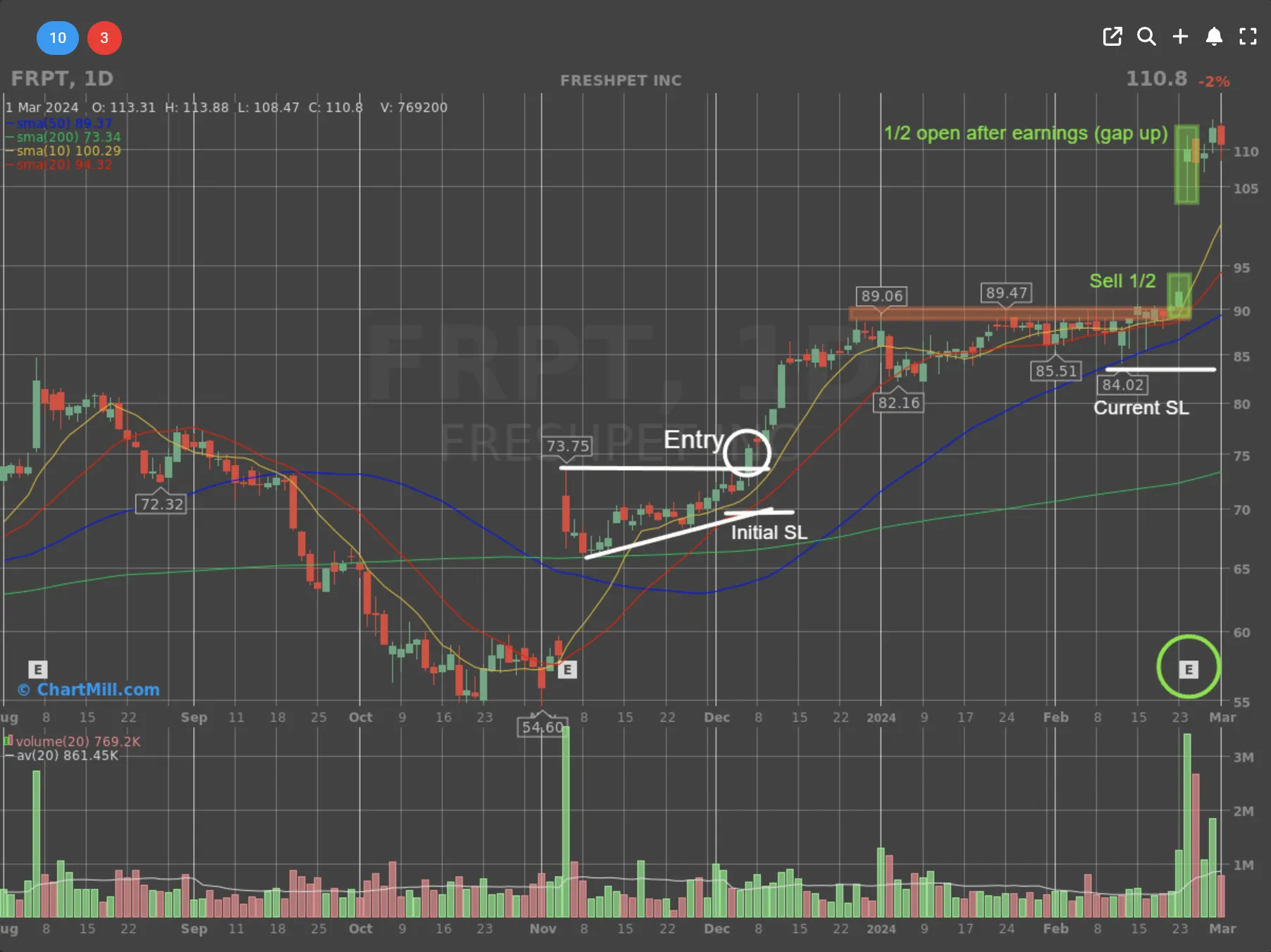
The common thread in this approach is consistency. Being consistent in your focus on risk management (keeping loss positions small) is the best way to become (and stay) structurally profitable as a swing trader.
The biggest enemy of swing traders are overnight gap downs. This happens when a specific event (profit warning, worse-than-expected quarterly report,...) occurs outside regular trading hours and the following day the price opens much lower than the previous day's closing price.
As a swing trader, you should always consider the worst possible scenario, even if the numbers are good.... The first three examples in the beginning of this article demonstrated this perfectly.
